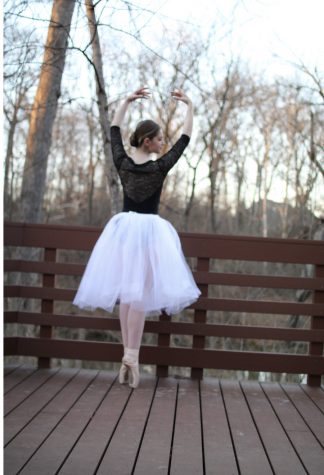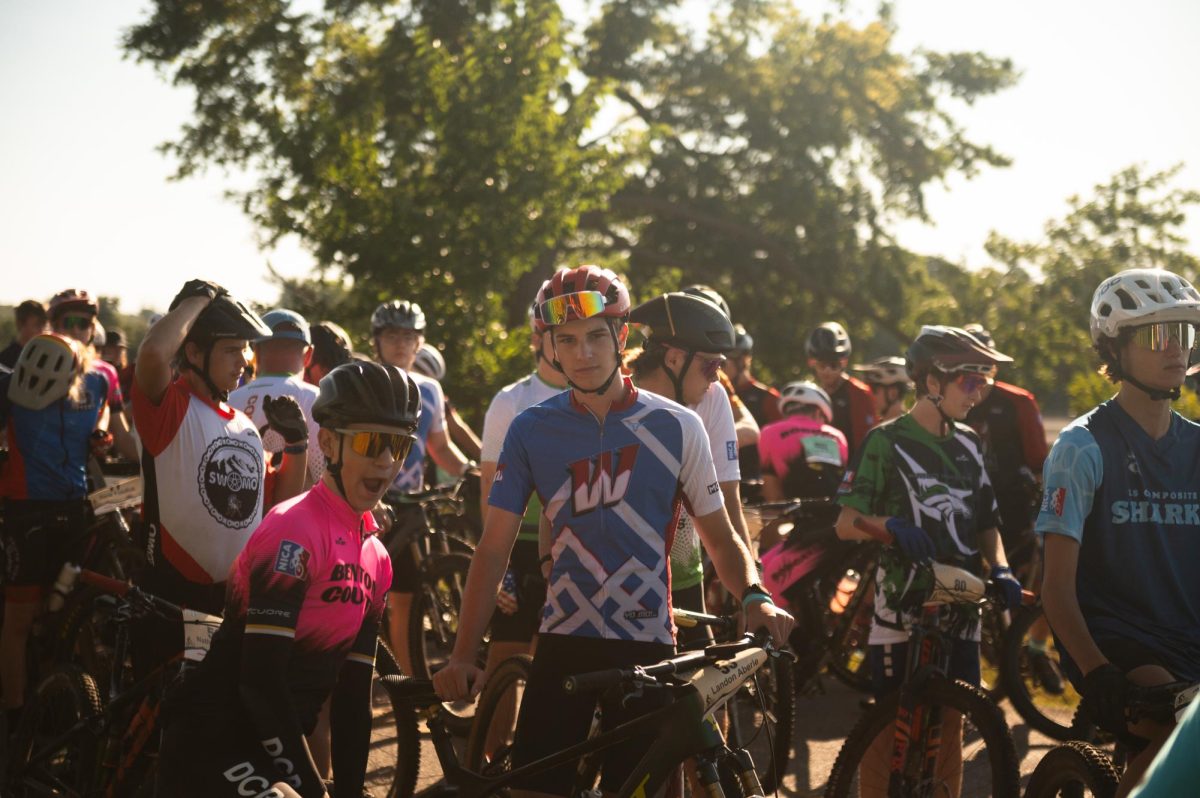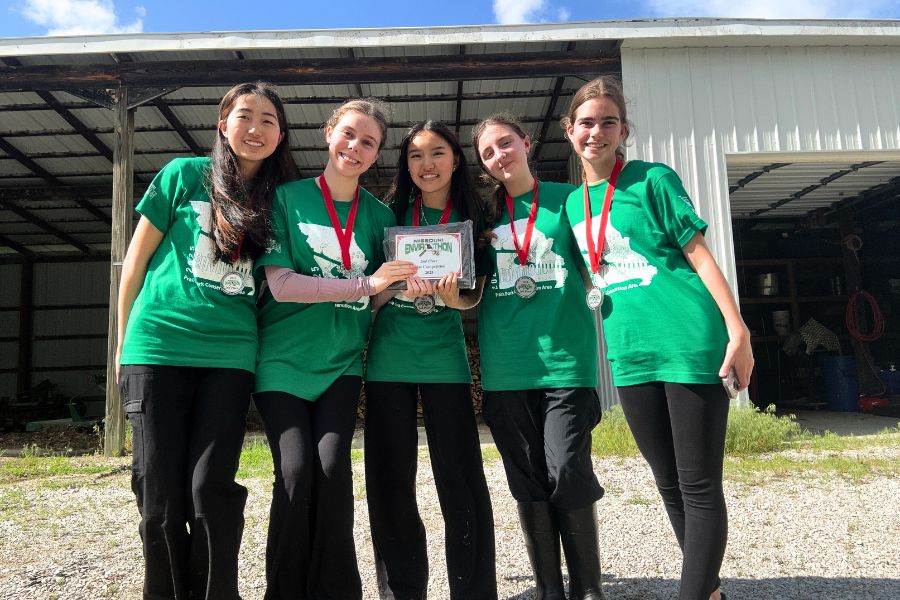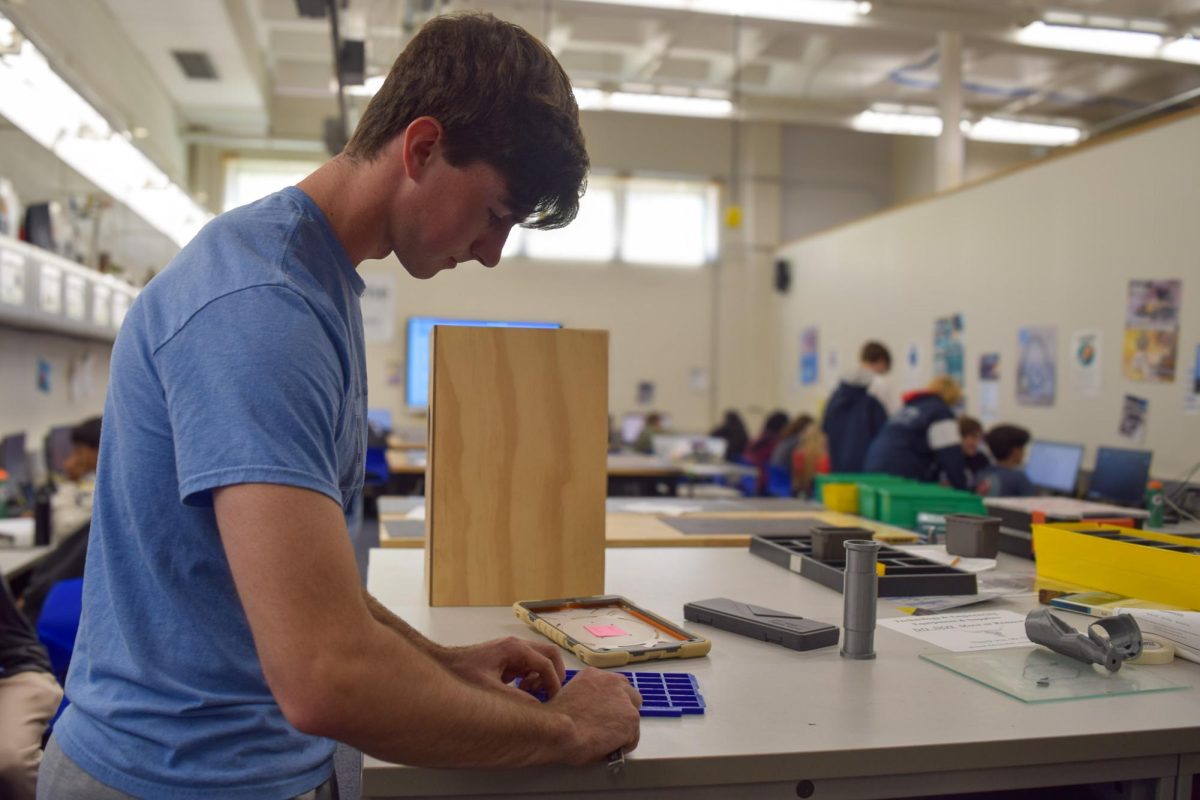Ask any dancer and they will agree that injuries are a part of life. In this technical and strenuous art form, routine exercises often pose risks if executed incorrectly. For sophomore Olivia Davis, what started as a pain in her foot in sixth grade progressed into Tarsal Tunnel Syndrome, a condition which causes chronic and sometimes excruciating pain in her feet and legs.
“It started in sixth grade. I got a stress fracture in my heel,” Davis said. “I was having pain in my plantar fascia. It’s normally a muscle, and it stretches. Mine was really tight so it hurts because [I] have to stretch [my] foot [differently]. The stress fracture was from a character class I took. It’s folk dancing, and you wear heels and bang your heel on the ground. That led to my Tarsal Tunnel Syndrome.”
While the stress fracture was caused by the folk dancing class, her feet had been deteriorating since the beginning of her dance career. Ballet requires turning out of the feet from your hips and Davis had been, unknowingly, turning out incorrectly.

“I was turning out from my knee, and I was ruining the nerve in my knee. Then also, wearing a boot from my stress fracture compressed my nerve canal,” Davis said. “The boot had to be buckled tightly or else it would have fallen off my foot. It was to treat my plantar fasciitis and my later torn ligament.”
Davis’s pain is caused by the posterior tibial nerve, which runs beside the ankle and is pinched in her foot, causing numbness along the length of the nerve and in her calf.
“[I get] sharp pains, leg swelling, a lot of different things. It’s always there,” Davis said. “Sometimes it’s completely numb. Sometimes, I’m not thinking about it, so it doesn’t hurt. Then all of a sudden, I’ll stand up and it gets really painful. I won’t be able to move. I’ll be in bed with my foot hurting really bad.”
Davis’ dance instructors were aware that dancing would aggravate the injury and encouraged her to participate as much as she wanted or was able to during classes. In the dance world, ignoring pain is a standard practice as injuries are common, and dancers have high pain tolerances. However, the pain eventually forced Davis to quit dancing.

“If I had stopped dancing five years before I did, then I would be almost fine. Physically, I can walk, and I can run. I can do everything, but it will make my injury worse,” Davis said. “I was scared that I wasn’t going to dance. It’s just a part of life. Hopefully I don’t have to get surgery or do any physical therapy.”
Throughout the years, Davis sacrificed a lot for dancing, including schoolwork. Davis practiced four days per week for two to four hours per day. Although she cannot dance anymore, Davis does not regret the time and effort she put into the art form.
“I remember my mom had to pick me up from school early so I could change in the car. I would have to do homework in the hallway. We would stretch and do homework,” Davis said. “It’s sad because I know I can’t [dance] now. I had to make the decision [to quit] because if I didn’t, I wouldn’t be able to walk.”
Davis credits dance with her discipline, maturity and time management skills. The studio also allowed Davis to pursue her passions and challenge herself.
“[During dance,] I could just work on myself. It gave me something to motivate me to work hard. I think a lot of my stress was rooted from school, so it was a place where I could let go because I could be with just myself and music,” Davis said.
To continue her creative career beyond dance, Davis is learning the flute and how to crochet. She plans to study nursing in college.
“Now I know that I need to pay attention to the things I do because everything I do could change my life,” Davis said. “Even when it’s hard, you have to make the right decision for yourself. Even when you don’t want to, when it’s going to change your life, you have to still do it. You have to do what’s best for yourself.”



![Sophomore Aleix Pi de Cabanyes Navarro (left) finishes up a soccer game while junior Ava Muench (right) warms up for cross country practice. The two came to Parkway West High School as exchange students for the 2025-2026 school year. “The goal for the [exchange] program is to provide opportunities for both Parkway students and our international exchange students to learn about other cultures, build connections and become confident, capable, curious and caring — Parkway’s Four C’s — in the process,” Exchange Program Lead Lauren Farrelly said.](https://pwestpathfinder.com/wp-content/uploads/2025/10/Feature-Photo-1200x800.png)

![Gazing across the stage, sophomore Alexis Monteleone performs in the school theater. The Monteleone family’s band “Monte and the Machine” has been releasing music since 2012, but Alexis started her own solo career in 2024 with the release of her first single, Crying Skies. “My whole family is very musical, [and I especially] love writing [songs with them],” Monteleone said.](https://pwestpathfinder.com/wp-content/uploads/2025/09/DSC7463-1200x798.jpg)
![Amid teaching a lesson to her AP Calculus BC class, Kristin Judd jokes alongside her students in their funny remarks. Judd has always enjoyed keeping the mood light in her classroom, along with on the volleyball court. “[I enjoy] that side talk where you see [or] overhear a conversation and chime in, or somebody says something funny,” Judd said.](https://pwestpathfinder.com/wp-content/uploads/2025/09/image-1200x730.jpg)
![Eyeing the ball, junior Ella McNeal poses for her commitment pictures at Clemson University. McNeal’s commitment comes after months of contact with top Division 1 soccer programs. “ It has taken a lot to get to where I am, but I know that [what] I've already been through is just the beginning, and I can't wait for what is to come,” McNeal said.](https://pwestpathfinder.com/wp-content/uploads/2025/09/IMG_4926-1200x900.jpeg)


![Senior Adam Zerega stands with senior Dexter Brooks by farm equipment. Zerega often worked with friends and family on his farm. “I've been able to go to my family's farm since I was born. I [spend] at least three weekends a month [on the farm], so I'm there all the time,” Zerega said.](https://pwestpathfinder.com/wp-content/uploads/2025/04/IMG_4872-1200x900.jpg)

![Phage grown by senior Rio Naghibi Harat sit in petri dishes. Through Webster University, Naghibi Harat was given the opportunity to develop phage as a potential remedy for tuberculosis. “Phage are everywhere. I got mine from a soil sample. I'm not kidding; I picked [it] up from dirt. They're harmless, unless you code them to do something, and they can evolve. Virus antibiotics can't. They're one solid molecule. A strain of this bacteria [can evolve] that is resistant to [a] particular drug, [but] phage will evolve with the bacteria. They can see the changes, and they can be the change,” Naghibi Harat said.](https://pwestpathfinder.com/wp-content/uploads/2025/04/Flag-2.png)
![Leaning on the podium, superintendent Melissa Schneider speaks to Parkway journalism students during a press conference. Schneider joined Parkway in July after working in the Thompson School District in Colorado. “My plan [to bond with students] is to get things on my calendar as much as possible. For example, being in [classes] is very special to me. I am trying to be opportunistic [meeting] kids [and] being in [the school] buildings. I have all the sports schedules and the fine arts schedules on my calendar, so that when I'm available, I can get to them,” Schneider said.](https://pwestpathfinder.com/wp-content/uploads/2025/09/IMG_5425-1200x943.jpeg)

![Leaping through the air, senior Tyler Watts celebrates his first goal of the season, which put the Longhorns up 1-0 against the Lafayette Lancers. Watts decided to play soccer for West for his last year of high school and secured a spot on the varsity roster. “[Playing soccer for West] is something I had always dreamed of, but hadn’t really had a good opportunity to do until now. It’s [really] fun being out [on the field], and I’m glad I decided to join the team. It’s just all about having fun with the boys and enjoying what time we have left together,” Watts said.](https://pwestpathfinder.com/wp-content/uploads/2025/09/DSC_1951-1200x855.jpg)

![Junior Fiona Dye lifts weights in Strength and Conditioning. Now that the Trump administration has instituted policies such as AI deregulation, tariffs and university funding freezes, women may have to work twice as hard to get half as far. "[Trump] wants America to be more divided; he wants to inspire hatred in people,” feminist club member and junior Clara Lazarini said.](https://pwestpathfinder.com/wp-content/uploads/2025/05/Flag.png)
![As the Trump administration cracks down on immigration, it scapegoats many immigrants for the United States’ plights, precipitating a possible genocide. Sophomore Annabella Whiteley moved from the United Kingdom when she was eight. “It’s pretty scary because I’m on a visa. When my visa expires next year, I’m not sure what’s going to happen, especially with [immigration] policies up in the air, so it is a concern for my family,” Whiteley said.](https://pwestpathfinder.com/wp-content/uploads/2025/05/DSC_0077-7copy.jpg)
![Shifting global trade, President Donald Trump’s tariffs are raising concerns about economic stability for the U.S. and other countries alike. “[The tariffs are] going to pose a distinct challenge to the U.S. economy and a challenge to the global economy on the whole because it's going to greatly upset who trades with who and where resources and products are going to come from,” social studies teacher Melvin Trotier said.](https://pwestpathfinder.com/wp-content/uploads/2025/05/MDB_3456-1200x800.jpg)

![Pitching the ball on Apr. 14, senior Henry Wild and his team play against Belleville East. Wild was named scholar athlete of the year by St. Louis Post-Dispatch after maintaining a high cumulative GPA and staying involved with athletics for all of high school. “It’s an amazing honor. I feel very blessed to have the opportunity to represent my school [and] what [it] stands for,” Wild said.](https://pwestpathfinder.com/wp-content/uploads/2025/05/unnamed-6-1200x714.jpg)
![Red, white and blue, the American flag holds the values of our democracy. The fight that we once endured has returned, as student journalists and senior correspondents across the country are losing their voices due to government control. “[Are] the White House and [the] government limiting free speech [and] freedom of the press? Yes [they are],” chief communications officer of the Parkway School District and former journalist Elisa Tomich said.](https://pwestpathfinder.com/wp-content/uploads/2025/03/Untitled-design-14.jpg)
